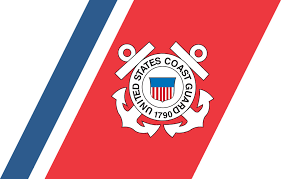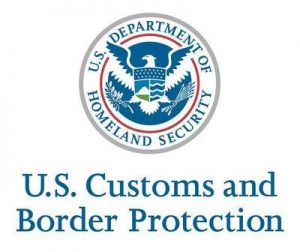Highlights include:
— Effective immediately, due to the lack of available space in the river, the COTP Sector New Orleans has closed the LMR to all inbound vessels that do not have berth arrangements confirmed by the appropriate pilot. (LAMA Note: The BAR Pilots have ceased operations.)
— All vessels entering and departing the COTP Zone New Orleans are reminded to update their Notice of Arrival with any changes to their arrival or departure information.
— The COTP has also outlined specific port preparation requirements and recommendations:
- All self-propelled ocean going vessels over 500 Gross Tons on the LMR, and
- All oceangoing barges and their supporting tugs located below the Huey P. Long Bridge at MM 106 above Head of Passes (AHP) on the Lower Mississippi River (LMR)
Are required to submit a Remaining in Port Checklist RIPC.
— You are reminded that bridge closures on the Inner Harbor Navigation Canal may begin 36 to 48 hours before severe weather makes landfall, depending upon how quickly the storm approaches. This information, as well as other important hurricane-related information, will be relayed to the maritime community through Marine Safety Information Bulletins and Safety Broadcast Notice to Mariners.
— The following precautionary measures are provided for your consideration.
All vessels and facilities operating below the Huey P. Long Bridge are strongly urged to implement these measures:
• Secure missile hazards and clear nonessential equipment and loose gear.
• Secure/remove hazardous materials or cargos to a safe location, especially drums.
• Oil transfer terminals not engaged in transfer operations should drain all loading arms and hoses of product, blank off hoses, and empty/clean small discharge containment.
• Mooring lines doubled up with due consideration given to the effects of predicted storm surge.
• If moored, outboard anchor rigged at a short stay.
• Ensure sufficient number of officers and crew onboard to tend mooring lines, and/or get underway.
• Vessel ballasted to ensure maximum safety.
• All side ports, hatches, portholes, and other openings are closed and secured.
• All firefighting equipment is ready for immediate use.
• A continuous radio watch maintained on Channel 16 and 67 VHF-FM.
• If at anchorage, at least two anchors set.
• If at anchorage, vessels should remain ready to get underway within 15 minutes.
• Spare mooring lines and/or wires should be readily available.
• Facility storage tanks should be pressed up or empty (it is preferred to have empty and/or pressed up tanks vice multiple tanks partially full).
• Styrene and other similar product-producing facilities should take additional precautionary measures
The full MSIB is below/attached.
Set Port Condition X-RAY
MSIB_Vol_XIX_Issue_047_Port_Condition_X-Ray.pdf
At 1100 local time, July 11, 2019, in preparation for the potential approaching tropical system developing hurricane strength, the Captain of the Port (COTP), Sector New Orleans set Port Condition X-Ray in accordance with the Maritime Hurricane Contingency Port Plan (MHCPP).
Vessel owners and operators are reminded of the Memorandum of Understanding (MOU) that went into effect October 2014 pertaining to vessels and barges located below MM 73 AHP, LMR, and for parties to the agreement to adhere to the conditions of the agreement as port conditions change. At this time, the Coast Guard does not intend to implement the safety zone for river evacuation below MM 73. However, these requirements will be discussed on our daily Port Coordination Team conference calls and reassessed as needed.
Effective immediately, due to the lack of available space in the river, the COTP Sector New Orleans has closed the LMR to all inbound vessels that do not have berth arrangements confirmed by the appropriate pilot .
All vessels entering and departing the COTP Zone New Orleans are reminded to update their Notice of Arrival with any changes to their arrival or departure information (33 CFR 160.208, 33 CFR 160.212). The COTP will make notifications as soon as waterway and bridge closures become apparent. The COTP has also outlined specific port preparation requirements and recommendations in the MHCPP.
• All self-propelled ocean going vessels over 500 Gross Tons, all oceangoing barges, and their supporting tugs below the Huey P. Long Bridge at MM 106 above Head of Passes (AHP) on the Lower Mississippi River (LMR) are required to submit a Remaining In Port Checklist (RIPC) in accordance with the MHCPP.
• Vessels are required to submit the RIPC reporting tool found in Enclosure 2 of the MHCPP. Vessels shall include enhanced vessel moorings with due consideration given to the effects of predicted storm surge.
• Upon completion of the RIPC fax or e-mail the reporting tool (attached) to the Vessel Traffic Service at (504) 365-2519 or e-mail to: D08-PF-VTSNEWORLEANS-LMR@USCG.MIL
You are reminded that bridge closures on the Inner Harbor Navigation Canal may begin 36 to 48 hours before severe weather makes landfall, depending upon how quickly the storm approaches. This information, as well as other important hurricane-related information, will be relayed to the maritime community through Marine Safety Information Bulletins and Safety Broadcast Notice to Mariners.
The following precautionary measures are provided for your consideration. All vessels and facilities operating below the Huey P. Long Bridge are strongly urged to implement these measures:
• Secure missile hazards and clear nonessential equipment and loose gear.
• Secure/remove hazardous materials or cargos to a safe location, especially drums.
• Oil transfer terminals not engaged in transfer operations should drain all loading arms and hoses of product, blank off hoses, and empty/clean small discharge containment.
• Mooring lines doubled up with due consideration given to the effects of predicted storm surge.
• If moored, outboard anchor rigged at a short stay.
• Ensure sufficient number of officers and crew onboard to tend mooring lines, and/or get underway.
• Vessel ballasted to ensure maximum safety.
• All side ports, hatches, portholes, and other openings are closed and secured.
• All firefighting equipment is ready for immediate use.
• A continuous radio watch maintained on Channel 16 and 67 VHF-FM.
• If at anchorage, at least two anchors set.
• If at anchorage, vessels should remain ready to get underway within 15 minutes.
• Spare mooring lines and/or wires should be readily available.
• Facility storage tanks should be pressed up or empty (it is preferred to have empty and/or pressed up tanks vice multiple tanks partially full).
• Styrene and other similar product-producing facilities should take additional precautionary measures
Ports and mariners are cautioned that the COTP New Orleans may quickly set Port Condition Yankee and further conditions as the situation develops. The COTP anticipates setting Port Condition Yankee this afternoon.
You are strongly encouraged to review your existing hurricane plan or develop a plan if you do not have one. It is extremely important to decide in advance how to minimize your risk and be prepared to evacuate, if necessary.
You may review the MHCPP, referenced above, online at http://homeport.uscg.mil/nola.
For additional information, contact the following:
Waterways Management: (504) 365-2280 Email address: SecNOLA-WPM@uscg.mil
Sector New Orleans Command Center (24 hour): (504) 365-2200
Vessel Traffic Center (24 Hour): (504) 365-2230 or VHF-FM channels 67 or 12
Coast Guard District Eight Bridges: (504) 671-2128
National Response Center (24 Hour): 1-800-424-8802
CAPTAIN K. M. LUTTRELL
Captain of the Port New Orleans



